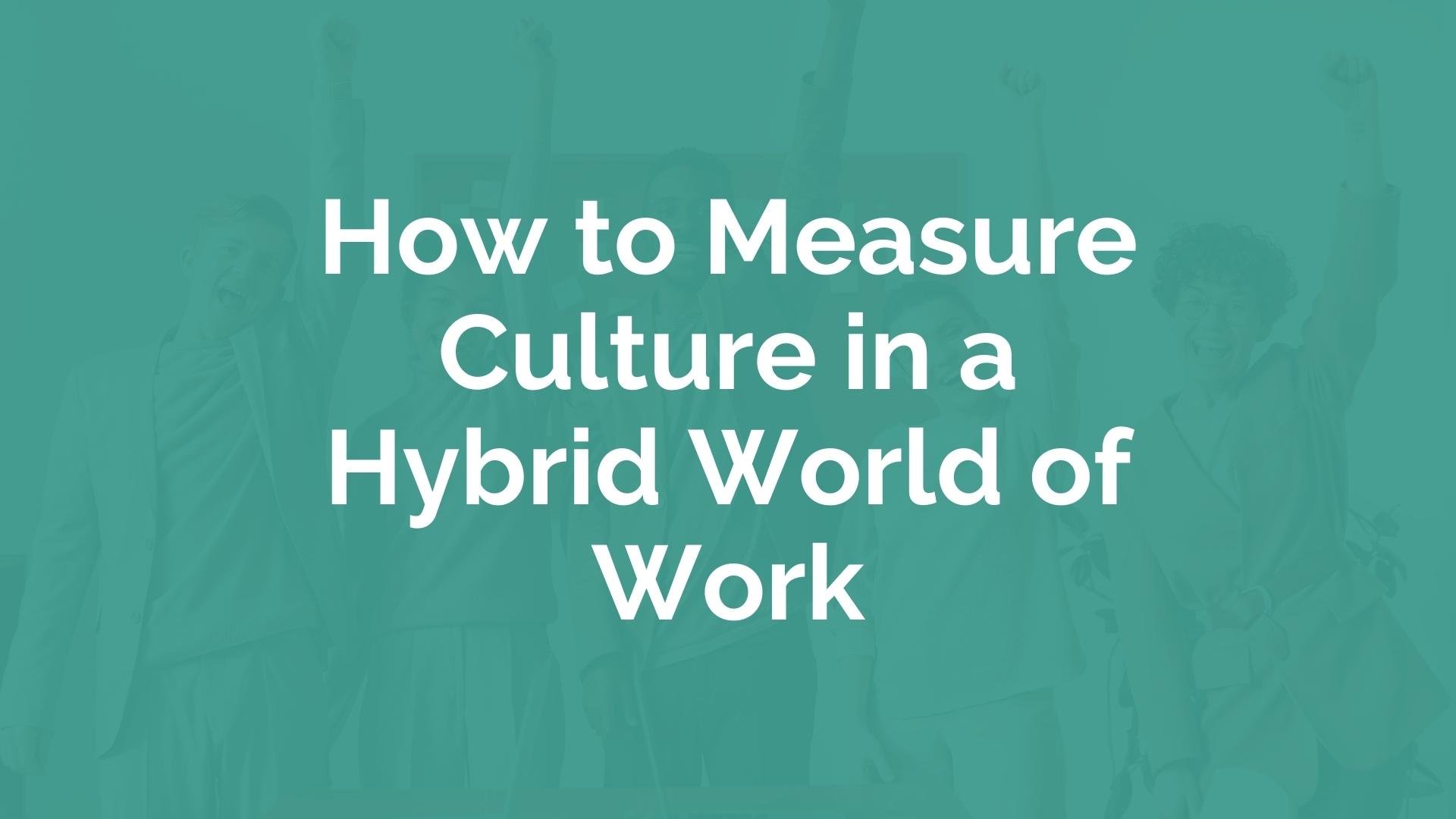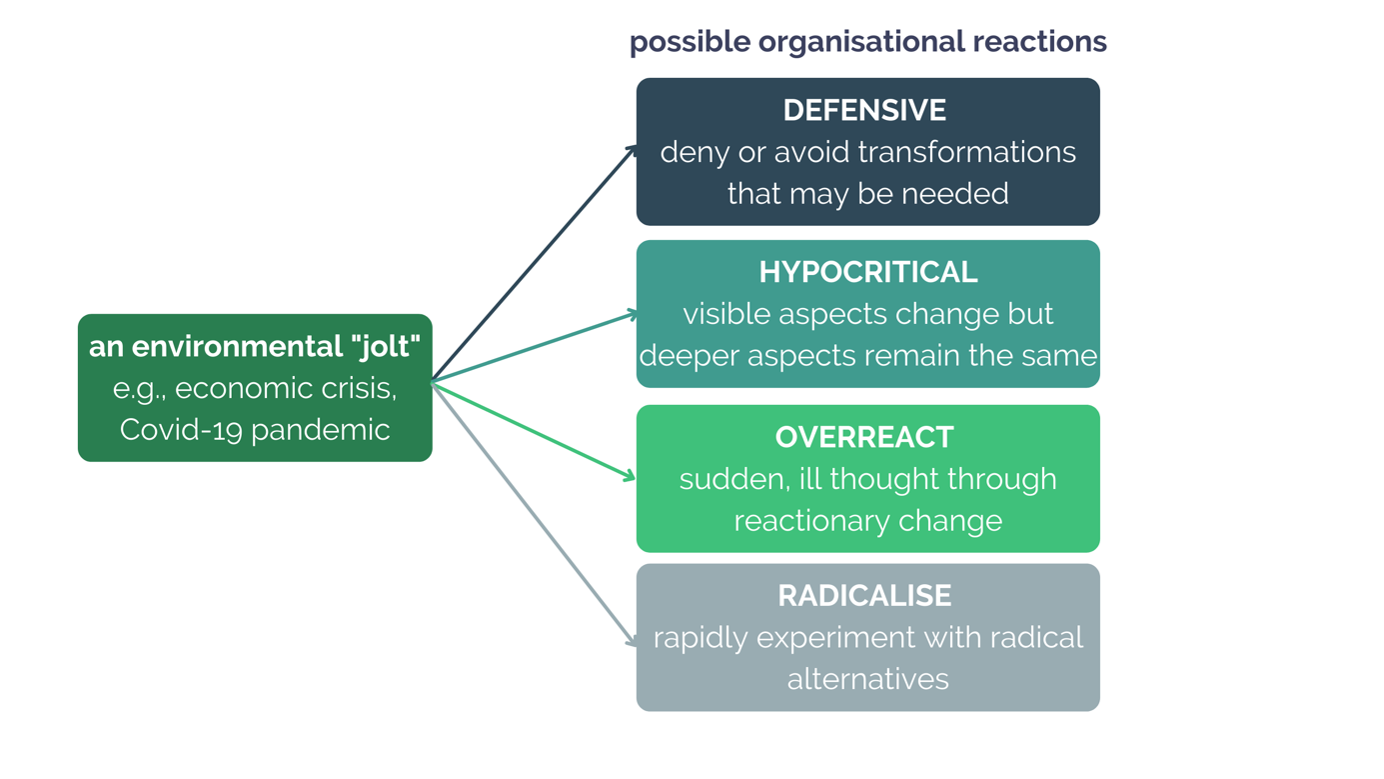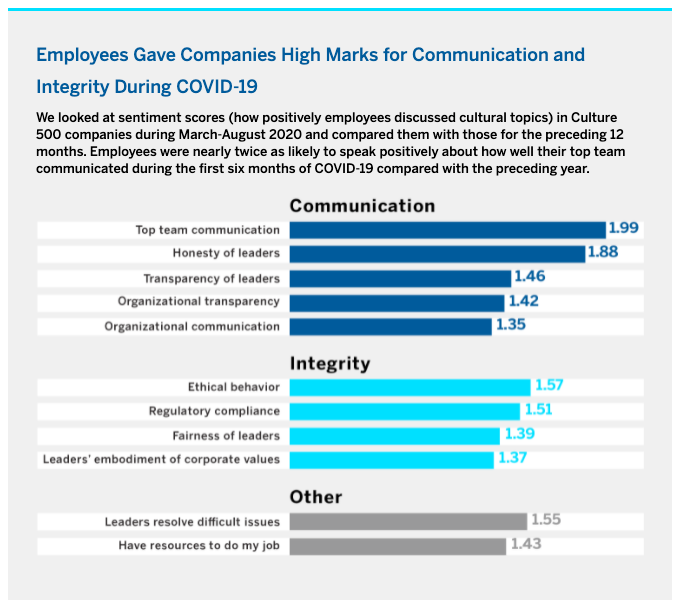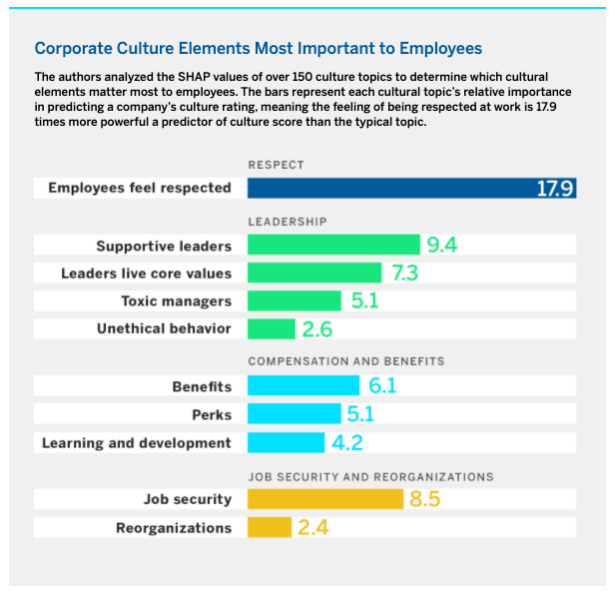How to Measure Culture in a Hybrid World of Work
A common company culture definition is “the way things are done around here” or the “unspoken” rules of how things get done. It is typically understood as comprising of the following elements, which are important measures of culture: signs and symbols, shared practices and underlying assumptions of an organisation.
Covid-19 has had a significant and indisputable impact on these basic elements of culture:
Signs and symbols. Workers removed from offices around the world were no longer faced with (often carefully planted) cultural symbols on a daily basis, for example open plan office structures, corporate clothing, imagery on the office walls or even ping pong tables and yoga mats.
Shared practices. The way work gets done has changed significantly: One-to-one catch ups over coffee have been replaced by regular zoom calls, new tools and technology have been implemented to keep processes running remotely. Even commuting rituals (or Thursday night post-work rituals) that were once common ground (“the district line this morning – what a nightmare!”) no longer exist for all.
Underlying assumptions. Safety, health and wellbeing and resilience have stormed to the top of the agenda to keep organisations and their people afloat since early 2020. Previously prioritised values, such as exploration and creativity, have taken a back seat in many organisations as a result.
As organisations adapt to hybrid work models, understanding how company culture has changed and how to develop effective culture change programmes is increasingly important. We offer four top tips from the research on measuring company culture published since March 2020 as well as company culture examples.
1. The role of psychological safety in measuring culture
Many academic publishers committed to making research publicly available throughout the pandemic, in an attempt to support organisations through unchartered territory. Research looking at the impact of Covid-19 on culture is no exception.
A paper titled ‘Organisational Culture and Covid-19,’ written by André Spicer of the Business School, City, University of London, explores the various “botched cultural change processes” of significant “jolts” in the environment:
To encourage more cyclical processes of reflection, experimentation and then action, Spicer recommends first and foremost ensuring that employees have sufficient psychological safety: a belief that context is safe for interpersonal risk taking – that speaking up with ideas, questions, concerns, or mistakes will be welcomed and valued.
An important part of measuring company culture is therefore to measure psychological safety – especially in times of significant change. To learn more about measuring psychological safety, listen to this episode of the Digital HR Leader’s podcast with Amy Edmondson, a psychological safety expert.
TOP TIP: Measuring psychological safety is a key part of measuring organisational culture
2. Understanding individual measures of culture elements to prioritise company culture change efforts
Research conducted by MIT Sloan Management Review and CultureX provides data behind the company culture change experienced by organisations during Covid-19. CultureX built an algorithm for measuring workplace culture using data from millions of employee reviews on Glassdoor.
Fig 2. MIT Sloan Management Review and CultureX
In March and April 2020, they looked at the ratings of the “Culture 500” companies (500 companies with the best culture, according to their research) and saw a significant jump in culture and value ratings.
It’s important to bear in mind that these are results for organisations that were identified as having a great culture already, before the pandemic began – not all companies. (Although there are more studies that support an increase in positive sentiment towards company culture since the start of the pandemic, often due to employees feeling more purposeful.)
Secondly, it’s important to break down the increased rating into component parts, to understand what’s working and what’s not working – an overall culture score can only get you so far, and it certainly won’t help organisations to prioritise culture efforts. Prioritising which cultural levers to pull (by analysing individual measures of culture) is an important part of measuring company culture at Google.
TOP TIP: Measure individual cultural elements separately, in order to prioritise culture change efforts.
Breaking down CultureX’s research further reveals measures of culture that scored significantly higher and lower after the start of the pandemic. This was achieved by measuring how employees discussed around 200 topics in company reviews using natural language processing.
Fig 3. MIT Sloan Management Review and CultureX
Fig 4. MIT Sloan Management Review and CultureX
The cultural element ‘communication’ experienced the greatest increase in positive rating at the beginning of the pandemic. We have seen some excellent company culture examples, including case studies of organisations prioritising communication with employees not just top-down but fostering a two-way conversation with continuous listening:
As part of the company culture at Uber, a continuous listening program was implemented at the beginning of the pandemic to understand how people were handing the transition to remote work. A survey that ordinarily took weeks or months to build was executed in less than five working days. Read more about this case study in our recently published report: Accelerating People Analytics: A Data Driven Culture for HR.
At Rabobank, the people analytics team quickly set up a formal communication loop with employees to tackle and prioritise their challenges as they shifted to remote work. Read Rabobank’s seven insights from continuous listening here.
Learn more about the four types of surveys that you can use to measure company culture by reading this article: How can you Measure Company Culture?
3. Measuring country culture to provide context when measuring company culture
To understand how Covid-19 has impacted company culture, an understanding of the national culture is hugely beneficial. Research shows there are three key elements of national culture that impact employees’ responses to the pandemic:
Strict versus relaxed hierarchical norms (high versus low power distance). Countries with more relaxed hierarchical norms (e.g., USA, UK) endorse participative decision-making processes that involve stakeholders from diverse backgrounds, compared to strict hierarchical norms (in countries such as China, Singapore and Saudi Arabia) where decision-making processes dominated by leaders is legitimate. This suggests that while an approach taken by Uber and Rabobank above might be well received in countries like the USA and UK, it might not be as effective in countries such as China.
Collectivist versus individualistic cultures. In collectivist cultures, individuals are prepared to prioritise national benefits over individual benefits, compared to individualistic cultures where there needs to be more of a balance between the two. This logic can be applied to the company context as well.
Cultural “tightness” versus “looseness” (i.e., the strength of cultural norms and how much individuals align with them). In tight cultures (e.g., Pakistan), individuals can be expected to abide by strict behavioural guidance and accept close monitoring. In lose cultures, lower compliance to Covid-19 safety measures (e.g., social distancing, mask wearing) can be expected, which organisations need to be mindful of, especially as employees from international locations come together again.
TOP TIP: Incorporate a measurement of national culture to tailor culture change efforts in different locations
4. Incorporating industry norms as an important measure of culture
Further research from CultureX analysed which cultural elements matter most to employees in 2021. ‘Whether employees feel respected at work’ was the most highly rated and identified as the single best predictor of a company’s culture score.
Very interestingly, the strength of this indicator varied according to industry:
Once again, the message is to prioritise measures of culture and subsequent cultural elements for change depending on your organisation, industry and country context. Employee voice can be a great input to this prioritisation approach (depending on the national culture, of course!).
TOP TIP: Be wary of comparing culture change initiatives across industries to inform your approach
Want to learn more about culture? Take a look a the following resources:
Get a head start and build the HR skills you need for success with myHRfuture.
If you’re looking to learn more about Digital HR or build the HR skills of the future, checkout the myHRfuture academy and our online HR training courses. Our content helps HR practitioners to become more knowledgeable in People Analytics, Digital HR and Workforce Planning. myHRfuture helps you build a foundation and really deepen your expertise in the skills you need to advance your career. The myHRfuture Academy provides you with an on-demand platform where you can get access to over 40+ HR certifications, 600+ pieces of expertly curated content and 200+ hours of learning the opportunities are endless. Start building the skills you need to get ahead TODAY.









